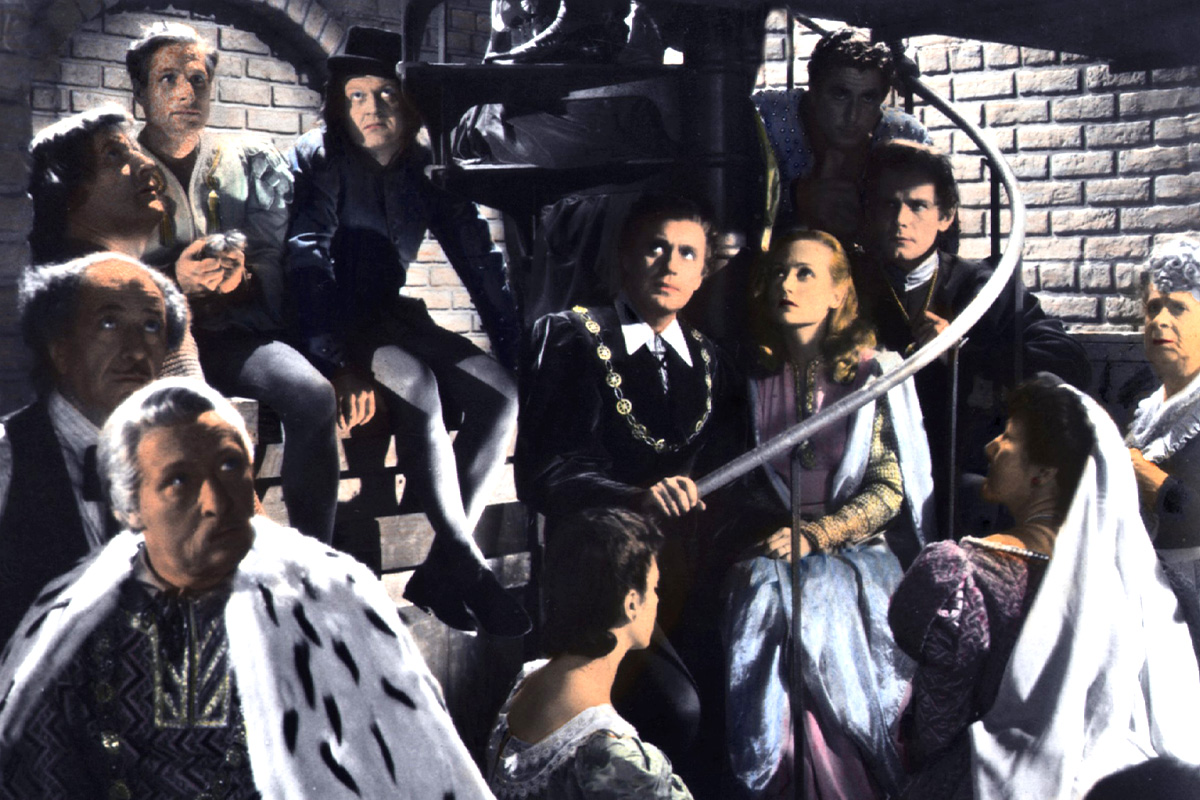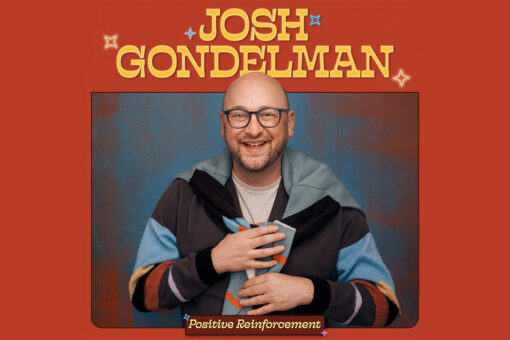In 2019, the release of “Jojo Rabbit” brought Holocaust comedy to a new generation. I found myself crying with laughter watching Jewish Māori director Taika Waititi as Hitler. His physical comedy (Hitler jumping out of the window headfirst with a “Tchuss!”) and his perfectly scripted interactions with young Jojo (perfecting the “heil” before going to school) artfully depicted Hitler’s exaggerated persona through a child’s imagination. And while my laughter-tears definitely became sadness-tears before the end of the film, I walked away feeling that I had experienced something significant.
The Holocaust comedy has long been a staple genre in Western Holocaust film. Before “Jojo Rabbit,” audiences enjoyed the award-winning “Life is Beautiful” (1997) and based-on-a-true-story “Europa Europa” (1990). Both ‘90s films have the same “laughing through tears” feeling — the comedy is brilliant but not without equally moving scenes of tragedy. Dealing with loss through laughter is human (and Jewish) nature. Even as the Holocaust was occurring, Jewish filmmakers were using comedy to bring attention to unfathomable violence. Looking back 50 years, we find the first Holocaust comedy, made while genocide was actually taking place: “To Be or Not to Be,” which screened in American movie theaters in 1942.
“To Be or Not to Be” follows a well-known Polish theater troupe rehearsing a satirical play called “Gestapo” which depicts the rank and file of the Nazi party. The stars of the troupe, Maria and Josef Tura (played by Carole Lombard and Jewish-American Jack Benny) are a hilariously vain married couple who banter non-stop.
The Polish censor forbids the troupe from performing their Gestapo parody, afraid of the Nazi response. Instead, they extend their stage run of “Hamlet.” While her husband performs on-stage, Maria Tura becomes intimately involved (as much as ‘40s censorship would allow, anyway) with a young and adoring, though slightly fanatical, Polish Air Force lieutenant (played by Robert Stack). After the bombing of Warsaw and subsequent invasion by Nazi forces, Josef and the troupe impersonate German soldiers to sabotage the plans of Nazi spy Professor Siletsky (Stanley Ridges). The film’s plot devolves into a sequence of cleverly executed charades that rely on fake moustaches and improvised witticisms to beat the Nazi intruders in typical Hollywood fashion.
While the twists and turns of “To Be or Not to Be” should be enjoyed without any spoilers, there is one part of the movie that needs some setup. Almost all the characters disguise themselves in some way throughout the story to hide their true identities from the German foe. My favorite character, Greenberg, is in disguise from the beginning.
Here’s how I know that Greenberg is Jewish, despite the word “Jew” being completely absent from “To Be or Not to Be.”
First, Greenberg is played by a Jewish actor: Felix Bressart. Bressart was born in Eydtkuhnen, a border town between Russia and Germany. He arrived in the United States in 1936, fleeing Nazism. His Eastern European accent is notable among a cast of typically American voices.
Greenberg is the movie’s comedic relief and sympathetic daydreamer. His jokes (like many written during this period of strict film censorship) hint at his Jewishness. For example, in his first scene, Greenberg is rudely interrupted by a policeman. Greenberg says to the policeman, “What you are, I wouldn’t eat.” The policeman replies, “How dare you call me a ham!” Throwaway quips like this are scattered throughout the film, like puzzle pieces for viewers who know what to listen for.
Greenberg’s dream stage role is Shylock from Shakespeare’s “The Merchant of Venice.” In that play, Shylock, a rich Jewish moneylender, enacts revenge on a merchant unable to pay his debt. Greenberg reclaims Shylock as more than a stereotype of greed and amorality by reciting his speech about humanity three times throughout the film.
In its original form, the speech explicitly refers to Shylock’s Jewishness: “I am a Jew. Hath not a Jew eyes? Hath not a Jew hands, organs, dimensions, senses, affections, passions?” In “To Be or Not to Be,” the word “Jew” is replaced with “we.” Although viewers are likely to assume “we” refers to the Polish people, the director left this open to interpretation. The side-stepping of Greenberg’s Jewish identity, and of the larger project of Jewish resistance to which the film merely alludes, were necessary sacrifices in an industry dominated by Catholic conservativism.
Who was the director behind this secretly Jewish resistance story? A German-Jewish exile named Ernst Lubitsch. Born in the scheunenviertel (barn quarter) of Berlin in 1892, Lubitsch was raised as an assimilated “Berliner” who connected with his Jewishness through comedy. From his directorial debut, “Fräulein Seifenschaum” (1915), to his final German production, “Die Flamme” (1922), Lubitsch directed dozens of films across genres. In 1922, the up-and-coming director moved to the United States. He set foot on German soil for the last time in 1932, the year before Hitler came to power.
Throughout the 1930s, Lubitsch both perfected his romantic comedy style in Hollywood and engaged in rescue efforts for the Jews of Germany. In addition to assisting members of his family in escaping from Germany, he joined other Hollywood immigrants in donating to the European Film Fund, which provided funds to new émigrés during the war. Despite repeated obstacles set by United Artists and the film censorship board, Lubitsch produced “To Be or Not to Be” with a team of talented émigrés and Jews.
When “To Be or Not to Be: came out in 1942, just after the United States entered World War II, its style of dark comedy appeared tasteless to audiences and critics alike. Audiences were not yet familiar with the genre, which was only popularized after the release of Stanley Kubrick’s “Dr. Strangelove” in 1964. Bosley Crowther, then the leading film critic of the New York Times, attacked the film in his review, calling it “callous and macabre.” Like your average 20th-century moviegoer, the critic could take a joke at a Nazi’s expense. He drew the line, however, at watching the destruction of Warsaw while tears of laughter lingered in his eyes.
But considering the complexities still present in making a successful Holocaust comedy in the 21st century, “To Be or Not to Be,” which was made contemporaneously with the Holocaust itself, deserves a watch. Lubitsch was a pioneer of the genre, but audiences overlooked and underappreciated this film in his time. Give it a watch on HBO Max or YouTube and remember to look for what — or, more precisely, who — is missing on the silver screen. For Lubitsch, what’s unsaid can speak louder than words.
Late Take is a series on Alma where we revisit Jewish pop culture of the past for no reason, other than the fact that we can’t stop thinking about it?? If you have a pitch for this column, please e-mail submissions@heyalma.com with “Late Take” in the subject line.




